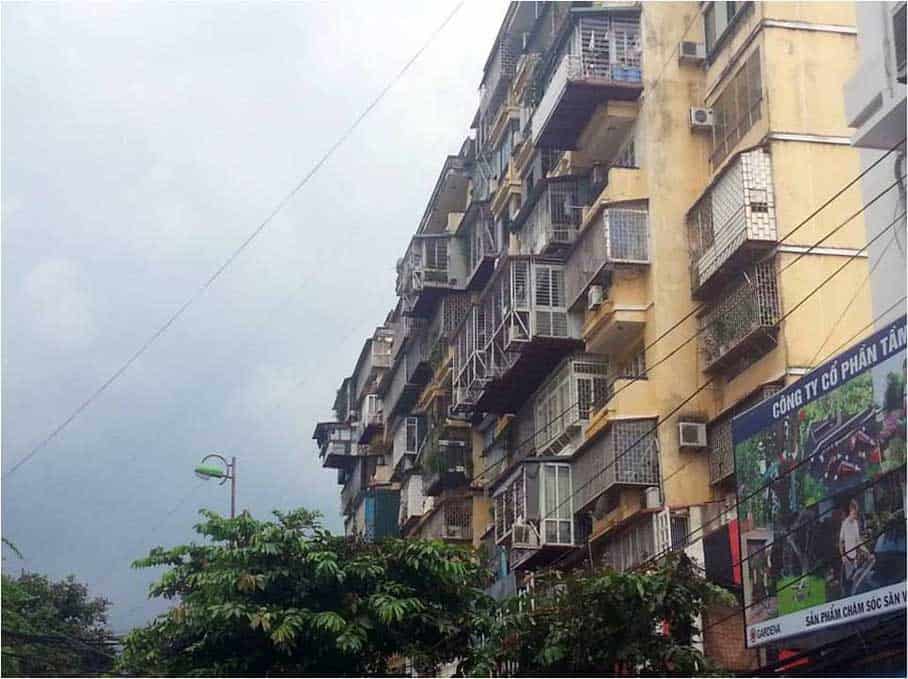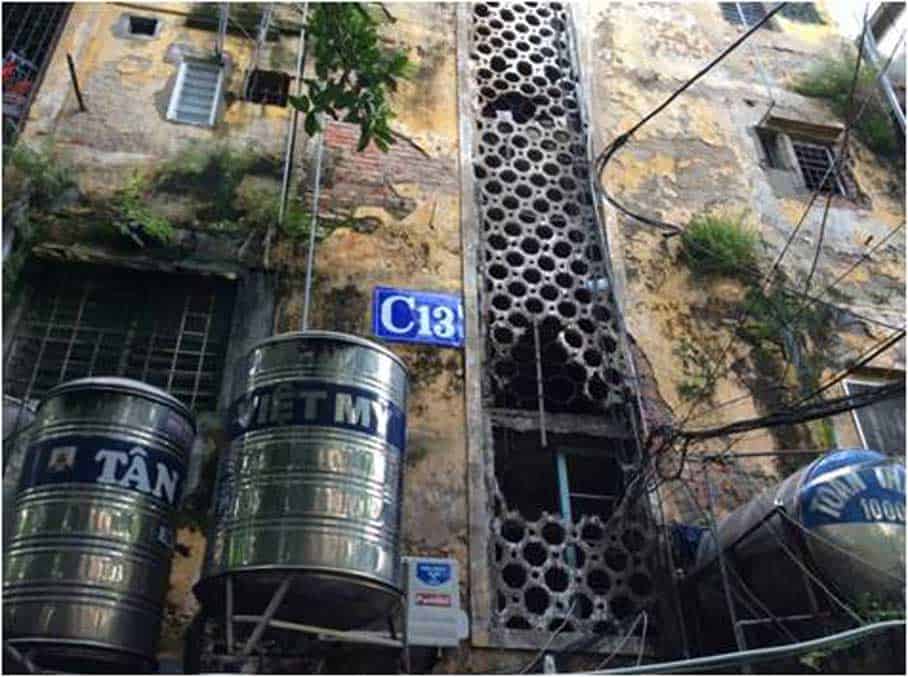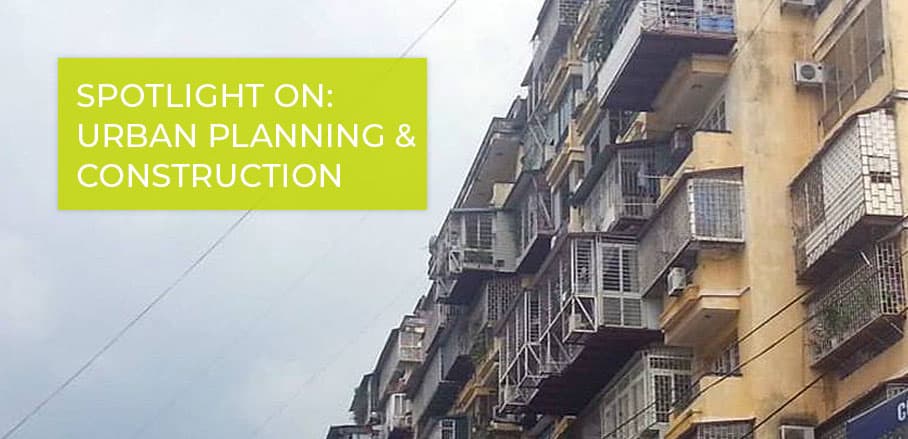When Communities Transform Old Socialist Housing into Adequate Housing – Part 1
Socialist-era apartment buildings in Vietnam’s cities, so-called KTT, are decaying rapidly. Tenants’ community organisations could help upgrade them and prevent redevelopment, says Boram Kimhur.
The poor living environment in old apartment blocks is one of the major housing challenges in Vietnam. These blocks are called Khu tập thể (KTT), which literally translates to “collective districts”. KTT were built during the communist period, mostly in the 1960s-80s, as a socialist housing model. The buildings and utilities have since deteriorated. Individual units have become overcrowded as well. On the other hand, KTT provide affordable housing. They house lively communities that take care of each other and their neighbourhoods. The community-based approach can be a feasible and instant solution for transforming KTT into adequate housing.

@Boram Kimhur, 2015, informally extended units of KTT blocks, Hanoi
Socialist Housing: Informally Extended, Badly Dilapidated, and Overcrowded
Many KTT still exist in major cities such as Hanoi, Viet Tri, Hai Duong, Vinh, Ha Long, Nam Dinh, and Ho Chi Minh City. They are generally four or five-story walk-up apartment complexes. KTT were built for civil servants, state-owned companies’ workers, and military personnel. In the late 1980s, along with the market-oriented reform of the country, KTT were privatised. Housing units were sold at a very low price to tenants who were already living in the buildings. Current users and buyers are mostly low- and low-middle income people, but there is generally a good social mix.
Many building stocks are severely dilapidated. In addition, many housing units are overcrowded. The individual units were originally designed for a nuclear family. But many residents are living with their extended family members. In some cases, a family of three generations (6-8 people) share a space of 35m2. Residents have informally extended their apartments. The ground floor units were extended towards the street (often for small shops), and the upper floor residents built suspended balconies and occupied some common space (such as corridors) as additional living areas.
Currently, there are multiple obstacles to managing KTT efficiently and with high-quality standards. While individual housing units in KTT were privatised in 1994, the common areas remained in state ownership. Corridors, stairwells, roofs, and land plots between KTT blocks still belong to the government. Thus, the government is responsible for maintaining common areas, building structure, and common facilities such as sewerage, septic tanks, and water storage tanks.
However, cities have limited management capacities and financial resources. They usually hire maintenance and repair contractors, but their capacity to date is low. The contractors’ performance is not monitored, and institutional systems have limitations for ensuring transparent budget expense. The monopolisation of housing maintenance by state or municipal organisations has caused underinvested, delayed, and deferred maintenance.

@Boram Kimhur, deteriorated building facades of KTT, Hanoi, 2014
Upgrading instead of Redevelopment
Run-down facades, poorly maintained corridors and stairwells, and the overall old style of buildings led several cities to plan a redevelopment project: a typical approach is to demolish the blocks, and construct higher, new apartment blocks for the investment cost recovery. In addition, the locations of KTT have become attractive for investors. When they were first built, KTT were located on the periphery of cities in the 1960s-80s. However, due to rapid urban expansion, they are now part of the central areas. This has triggered the cities to consider more market-oriented redevelopment projects targeting higher income people and enterprises, which often means that KTT residents are forced out.
In response to such redevelopment plans, many KTT community leaders in Hanoi have expressed repeatedly that residents do not want to be relocated. In some cases, building blocks were assessed as structurally unsafe. But the residents do not have full trust in the government’s assessment. For the residents, living in their community is important for their livelihoods. A former community leader at C8 Building in Giang Vo KTT, Hanoi, puts it this way:
“Having to move to a new urban area is unfair for us. Schools, kindergartens, hospitals, markets—everything we need is nearby, unlike in places we are supposed to relocate to. Some residents are running their small business here. They have no idea what items they can sell there. They will become poorer. We don’t want to be dependent on the government’s little subsidy. Our neighbours know each other well, take care of each other, and share the cost for common problems. This community bond will be broken up.”
In 2014, Hanoi discussed the redevelopment of KTT and the relocation of residents. One major concern was how to make redevelopment projects feasible economically. Solutions other than demolishment and reconstruction are still largely absent from public debate and policy making, even today. As a consequence, maintenance and improvement of KTT building are not considered possible alternatives to redevelopment.
This is regrettable since improving KTT and developing a good management system is a much more efficient approach than rebuilding, as long as buildings are structurally safe. Complete demolition and reconstruction often cause high social, economic, and environmental costs. It adversely impacts existing communities and residents’ quality of life. Before it is too late, we need proactive steps towards an alternative solution.
In Part II of this article, you can find out more about community-led upgrading of KTT and why it would be a better solution than demolition and reconstruction.
